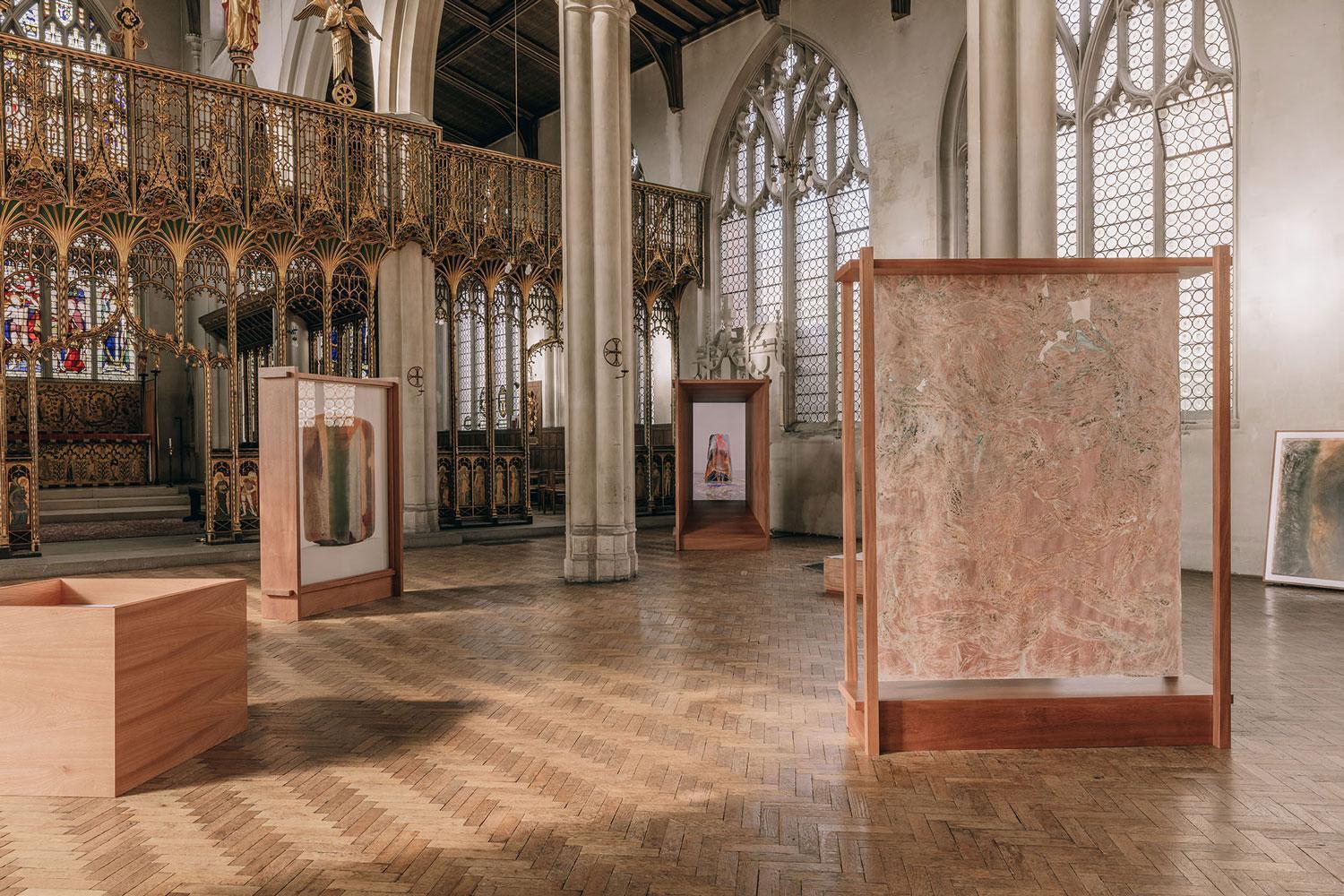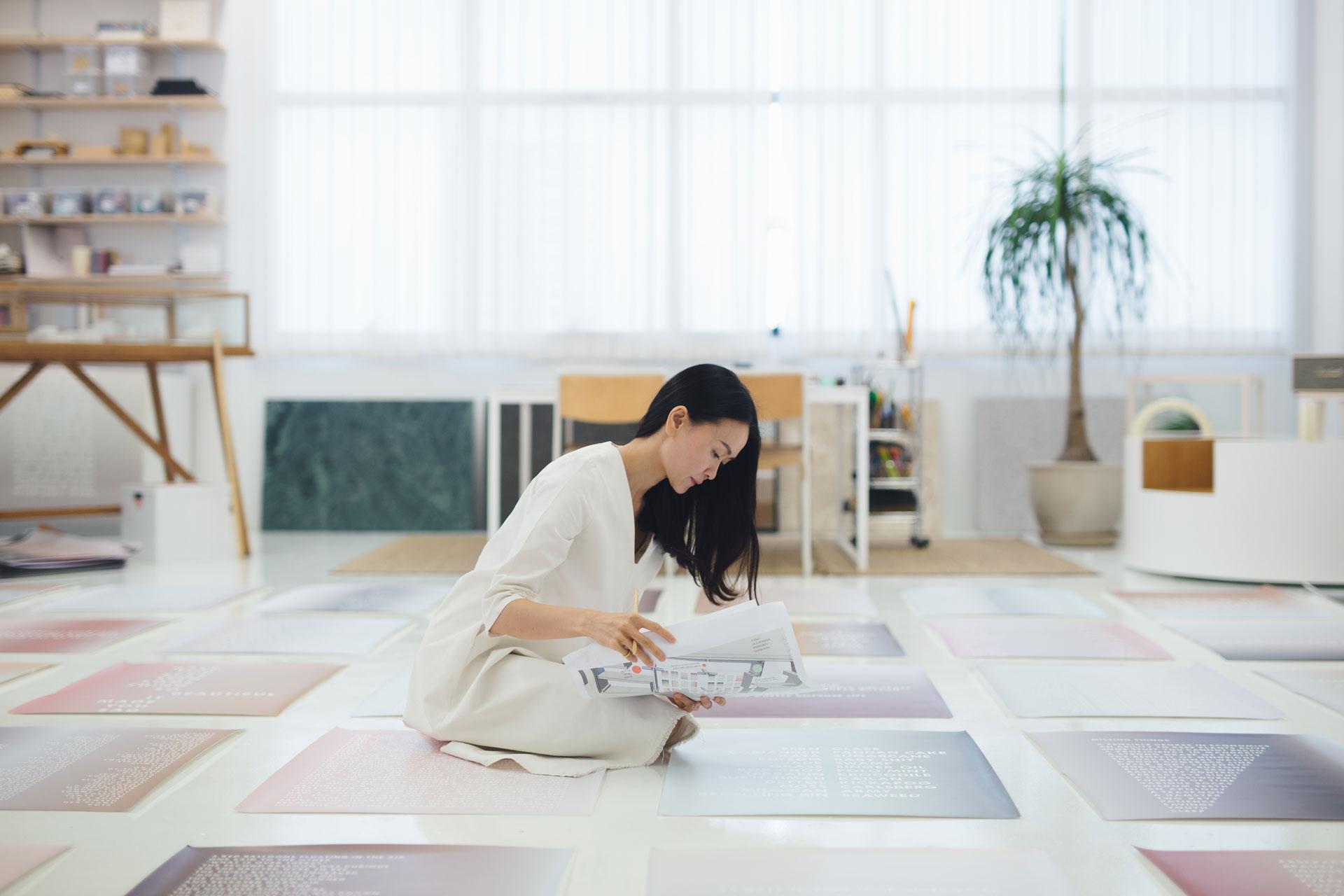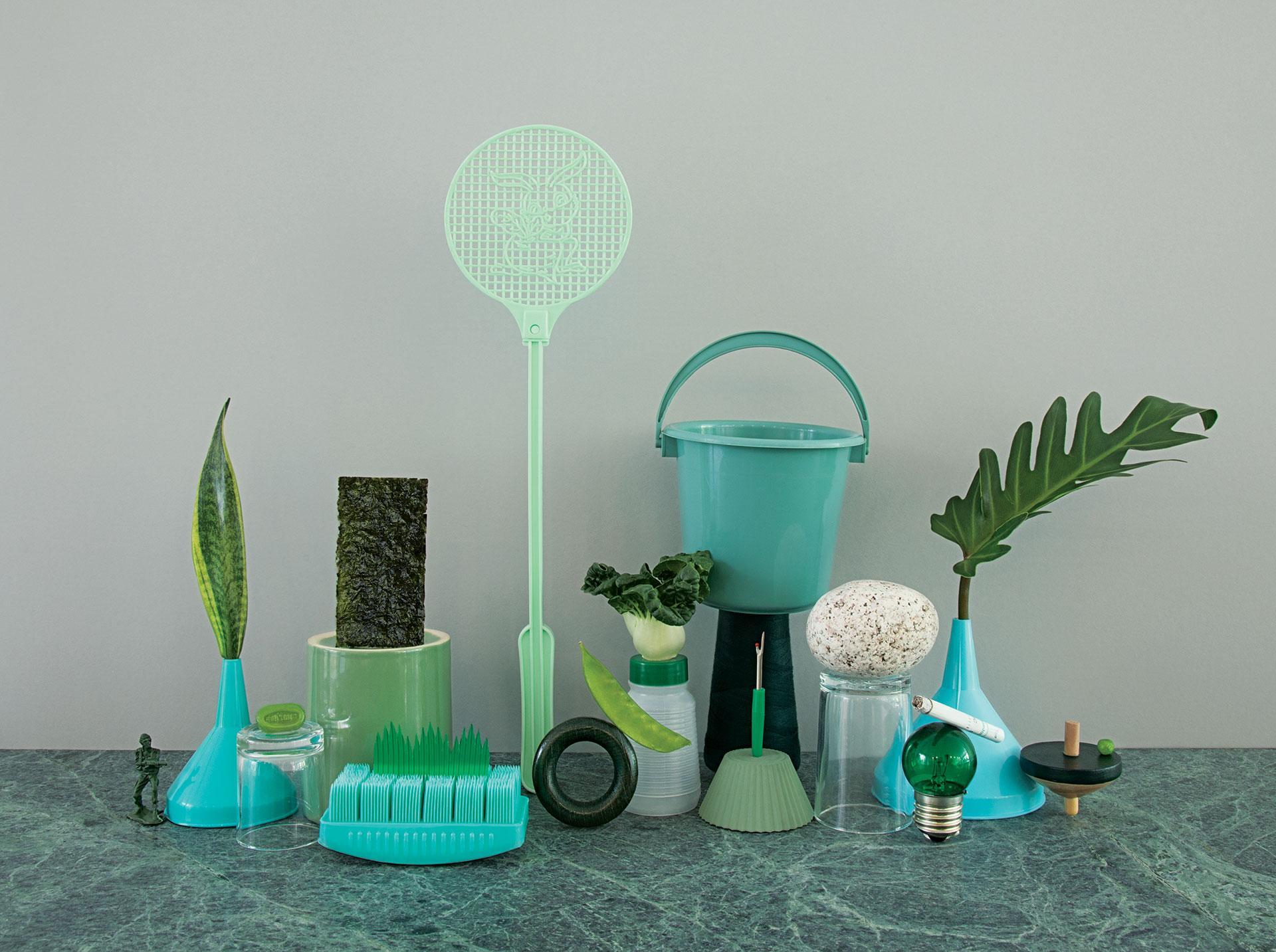23 Jan 2021
INTO AIR (Singapore), Curator Essay
Author: Tan Siuli
Dawn Ng’s works have always been tinged with a sense of wistfulness. Their alluring colour palettes and artful compositions belie a poignant sense of loss, and a desire to remember – and memorialise – that which will soon be gone forever.
Throughout her practice, an acute sense of time and its passing informs the making of Ng’s works; her art is, in many ways, an acknowledgement of the inexorable passage of time as well as an attempt to arrest or suspend it. Into Air coalesces and articulates these themes – along with other related strands of Ng’s practice, discussed below – in three distinct bodies of work.
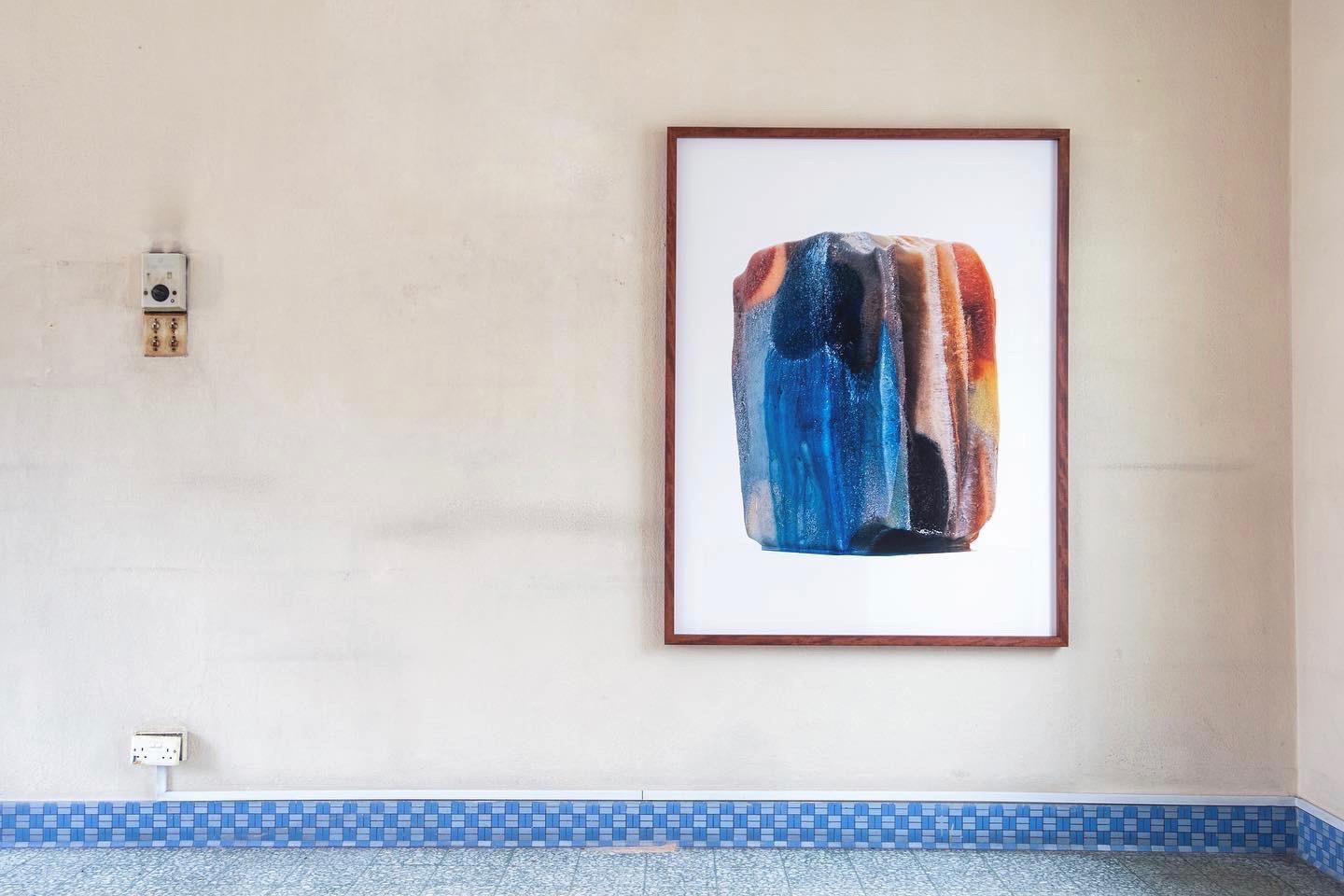
SOME WILL FALL IN LOVE WITH LIFE AND DRINK IT FROM A FOUNTAIN THAT IS POURING LIKE AN AVALANCHE COMING DOWN THE MOUNTAIN, CLOCKS, Photographed Installation, Archival Pigment Print, 1180 x 1530 mm, 2021
TIME
One of her earliest forays into the art world, a series of handmade objects titled Thirty One Kinds of Wonderful (2011) marked the intimations of a diaristic approach and Ng’s preoccupation with time.
Assembled from found materials and salvaged trinkets collected from the artist’s daily rambles through the city of Paris, each unique object was made over the course of a day, and conceived of as a celebration of the quotidian.
Collectively however, they mark the passage of time, and the hours and labour given over to their creation may be likened to a kind of daily meditation: they stand as individual records of a certain day in Ng’s life.
From this series, Yes Yesterday is emblematic of these preoccupations with time and the compulsion to hold on to fleeting moments. A series of vials houses mementoes of life lived and savoured: confetti from a party, tobacco shavings, pressed flowers from a lover’s gift. These evocative residues are presented in clinical dropper vials, almost like medicinal essences preserved for a future where these memories can be administered like a salve.

YES YESTERDAY, 31 KINDS OF WONDERFUL, Materials and Sizes Varying, 2011
A similar approach may be observed in Windowshop (2014), a collection of cabinets housing curiosities and common objects scoured from homes and local junk stores.
These former belongings or personal possessions are re-assembled into vitrines, each functioning as “a personal memory theatre” that is quietly – and quirkily – revealing about what people choose to keep, and then discard.
A close cousin of the work, A Thing of Beauty (2015) is a series of photographic ‘portraits’ of sundry objects. With a keen eye for the aesthetic, Ng assembles motley collections of unrelated objects – a back scratcher, a juicer, nail clippers and a scouring sponge – grouped by colour, into surprising compositions that re-train our eyes to focus on these everyday objects anew, to properly see what the artist describes as the “invisible normal”.
By reframing these quotidian items in beautifully composed images, Ng invites viewers to cherish the mundane minutiae of everyday living, the fleeting moment of the here and now.

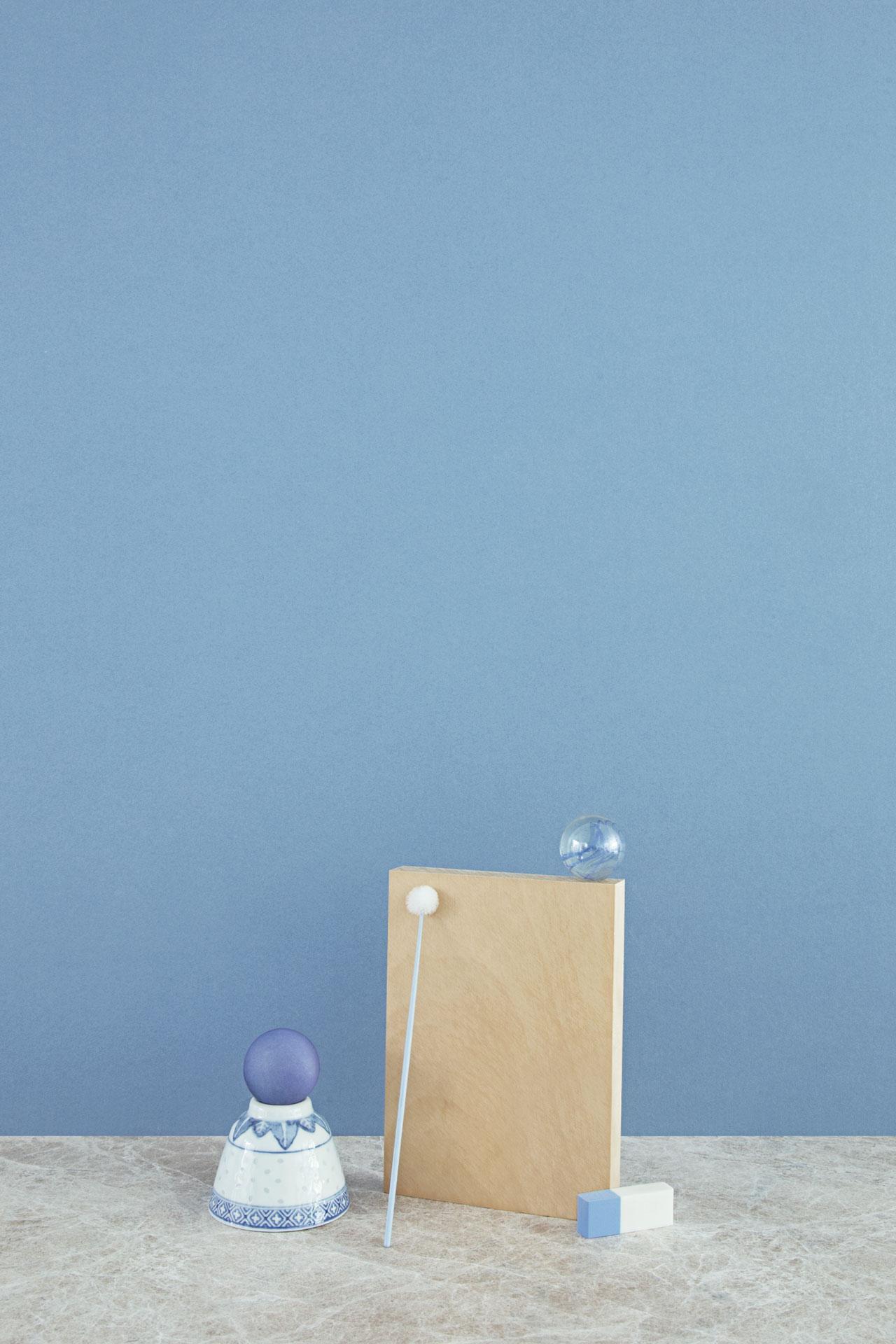
BLUE, A THING OF BEAUTY,
Photographed Installation, Large: 86 X 126 CM, Med: 73 X 106 CM, 2015
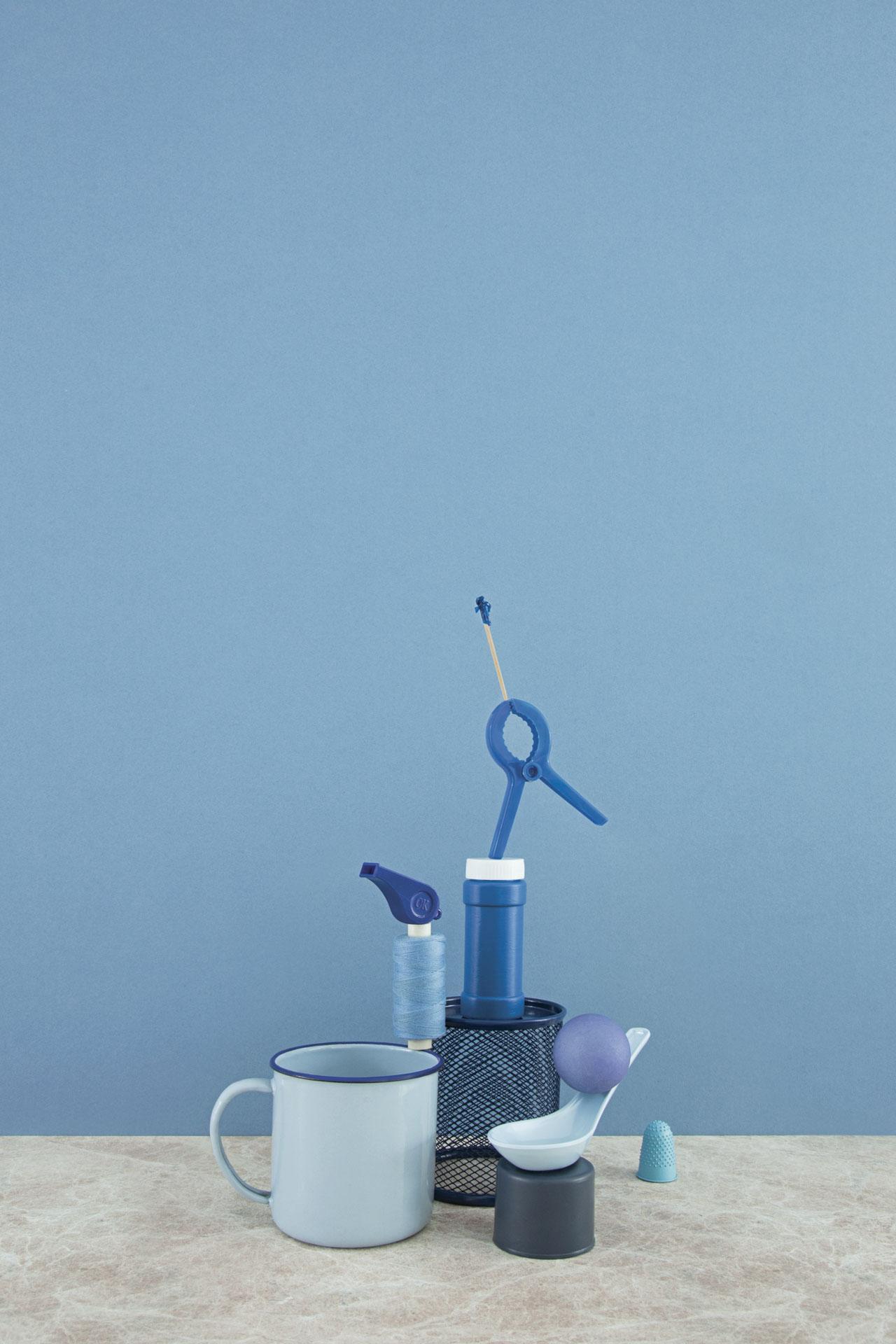
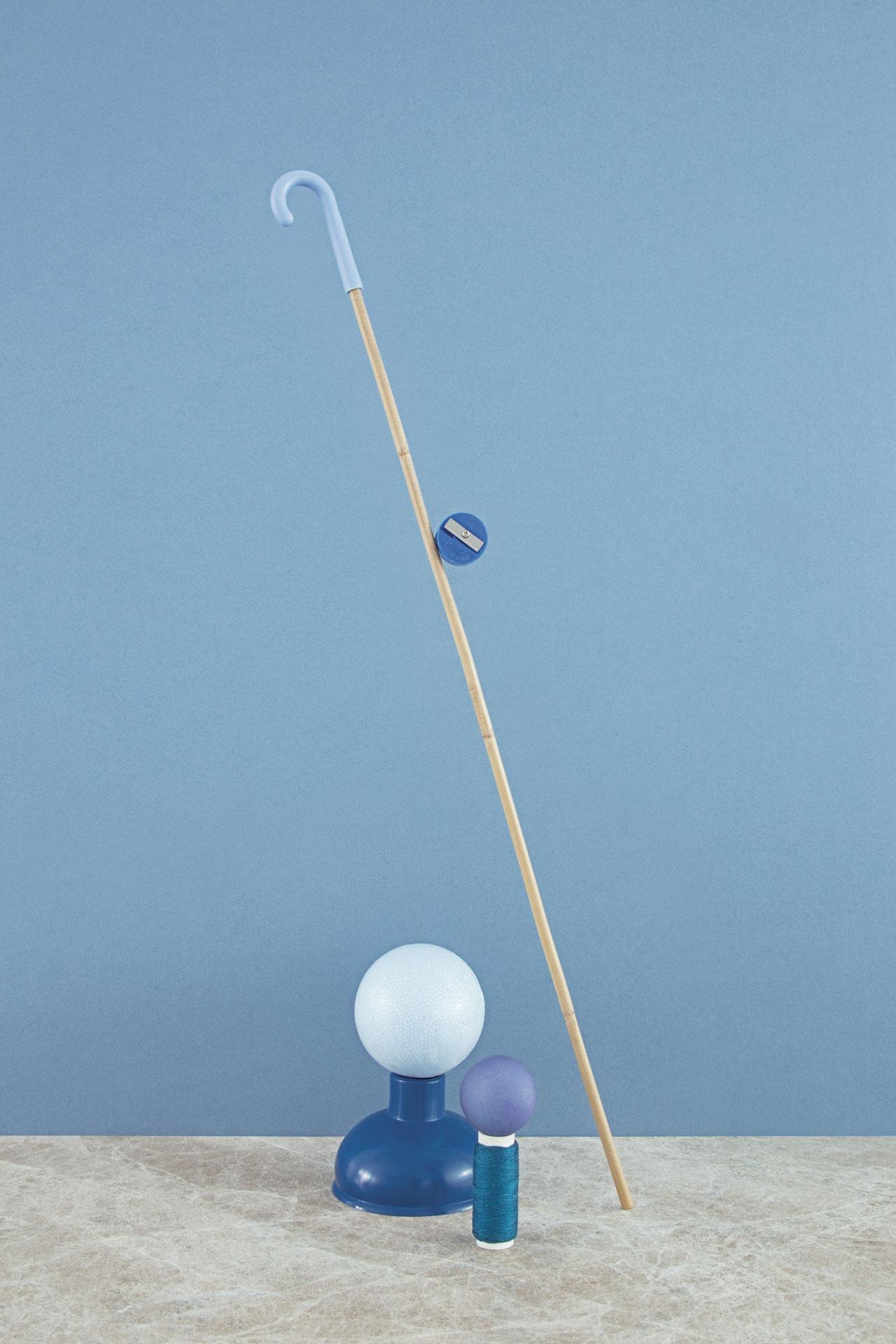
Similarly, the vignettes of overlooked or disappearing sights and scenes in Singapore’s constantly evolving cityscape, captured in Everything You Ever Wanted Is Right Here (2012), are snapshots of the everyday at a particular point in time.
While many have commented on the nostalgia implied in these images, cued by their documentation of vanishing trades and the charm of old ‘mom and pop’ shops, the artist is insistent that this visual documentary was not motivated by sentimentality. Rather, it is driven by an acute awareness that a particular moment in time will be lost and gone forever: one cannot step into the same river of time twice.
The ache of the ephemeral, the realization that the present which we occupy and experience is constantly disappearing, is behind the impulse to seize the moment, and to memorialise it. Objects and physical spaces are always, for Ng, emotionally bound up with time and life lived; they are “fossils and emblems of people”.
Tellingly, when speaking about a series of photographs of domestic interiors, the artist shares: “I chose to document homes that were lived in for at least 10 years because I think what differentiates a home from a house is the passing of time – the accumulation of everyday life, events and memories that manifest itself in the unique clutter of a space. Anthropologically, it was the most fascinating and intimate part of the project.”
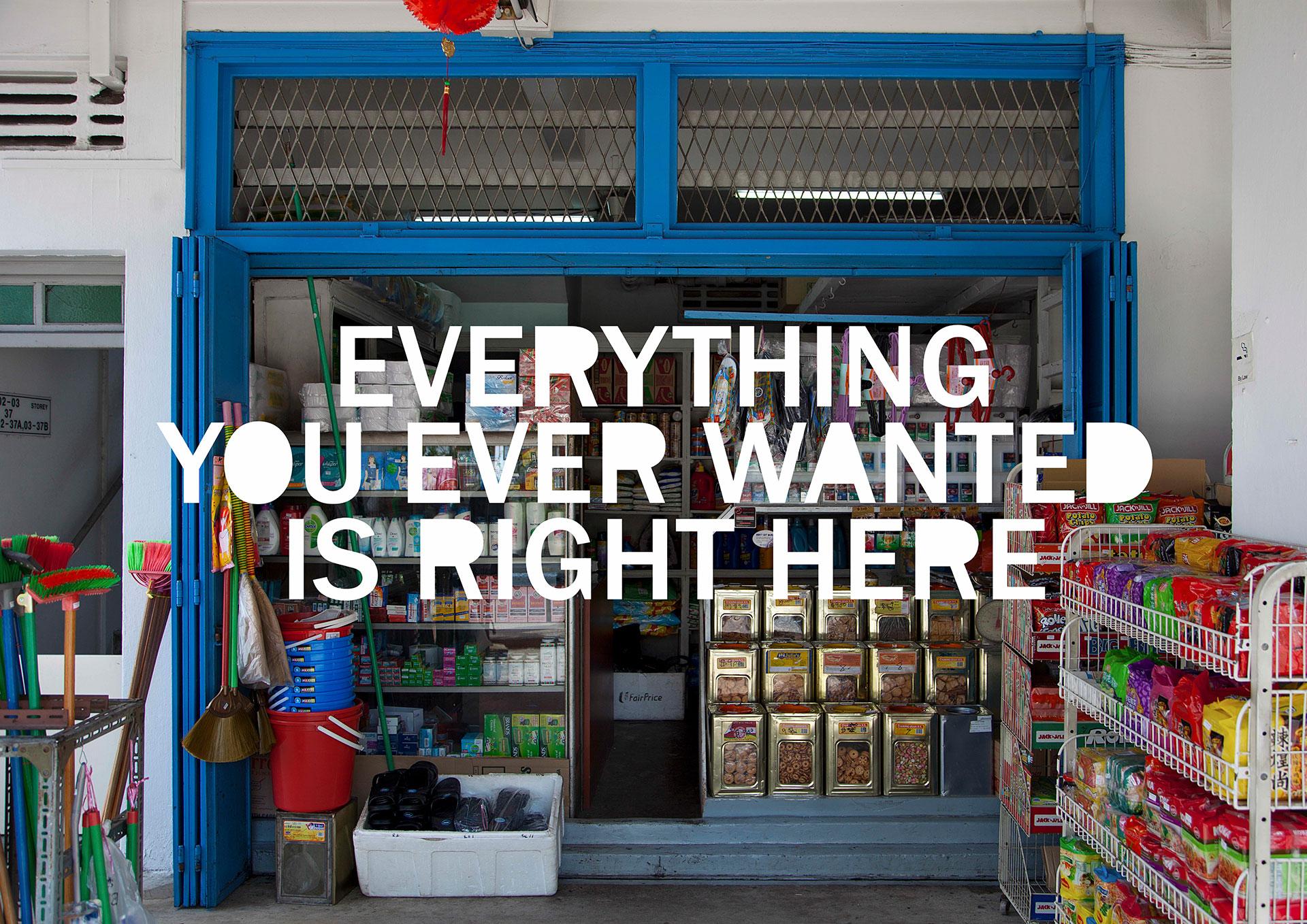
MAMA SHOP, EVERYTHING YOU EVER WANTED IS RIGHT HERE, Hand Cut C Print Photographs, 1614 X 1200 mm, 2012
LIGHTNESS AND LEVITY, WEIGHT AND MONUMENTALITY
Many of Ng’s earlier works convey a sense of lightness and airy suspension. A site-responsive installation for the Open House art festival in 2009, Paper Planes, captures this perfectly, the swarm of white aeroplanes carefully installed to create an impression of soaring flight and weightlessness, while harking back to the levity of classroom pranks and youthful play.
Perhaps not coincidentally, Ng’s subsequent projects also feature the use of balloons or inflatables, for instance in her popular pop-up sculpture Walter. Its guerilla nature aside, perhaps what Walter gestures towards, once again, is the fleetingness and impermanence of that chance encounter, which is then meticulously documented in a series of surprising images.
Balloons – that perfect symbol for transience and dreams of flight – feature once again in a commissioned work, White (2015), where they evoke a dreamy cloudscape. Another work, Cirrus Clouds (2013) gestures towards those shapeshifting wisps of vapour on which we pin our hopes and daydreams. These images are light-hearted, but also quietly barbed (as with Ng’s invocation of the prohibitive signage found all over Singapore).
The image of the balloon, while whimsical and ethereal, is always tinged with the poignancy of its ephemerality: it can float away from one’s grasp if not tethered, or burst.

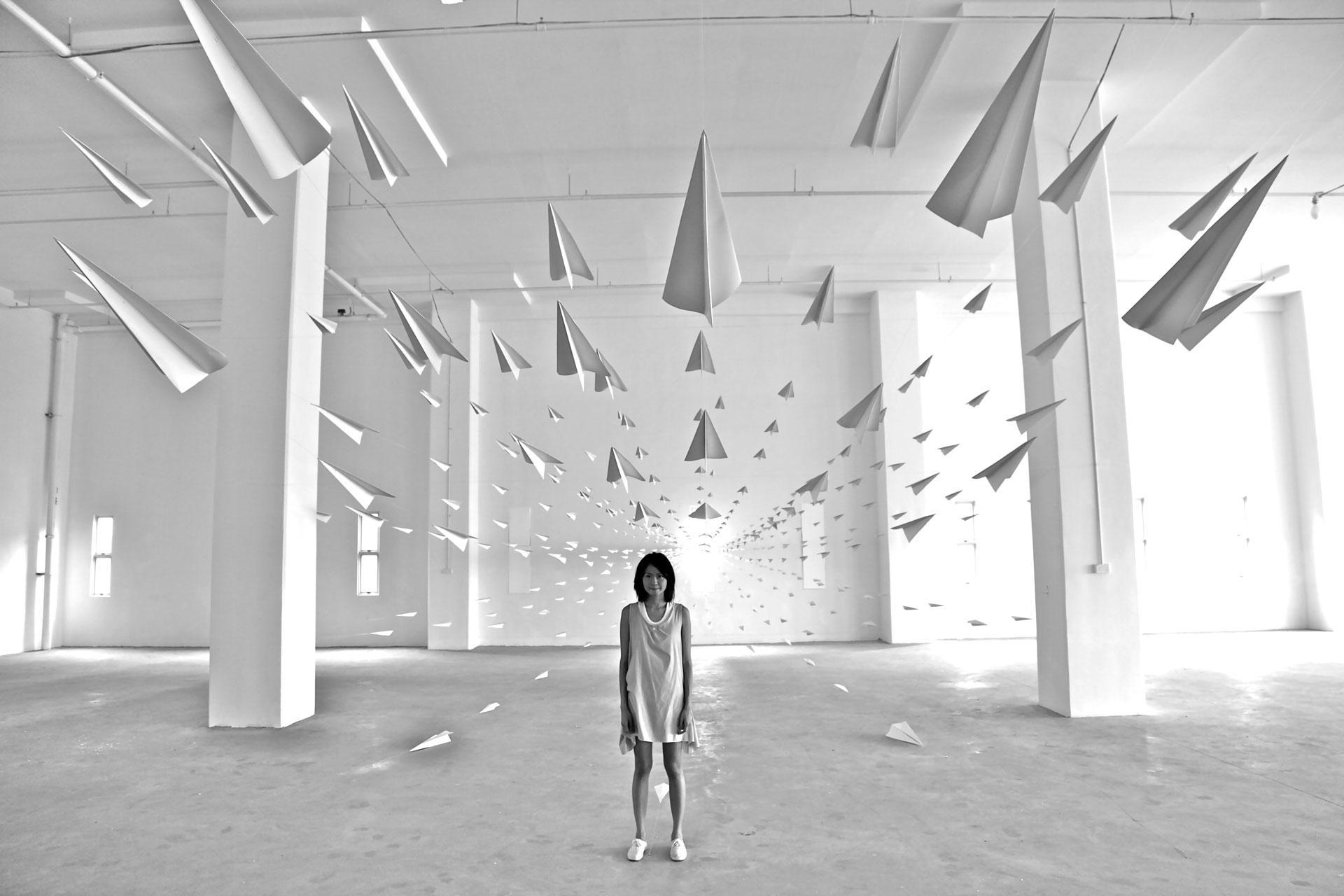
PAPER PLANES, Installation, Cable, Paper, Nylon, 200 x 200 x 100mm, 2009

WHITE, Commissioned Installation, Mixed Media, 2015

CIRRUS CLOUDS, Installation, Steel, Acrylic, Light, 2013
As a final mention, Ng’s commissioned work for Facebook’s Singapore headquarters, Bang (2016), creates the illusion of a shower of confetti permanently floating down the stairwell: an arrested moment of effervescence, a celebratory climax captured for posterity.
And yet, there is a sweet ache to this (futile) attempt to hold on to this flash of happiness; as one walks over the confetti on the floor and steps, one cannot help but feel that one has missed a moment of joy – a moment that has passed forever.
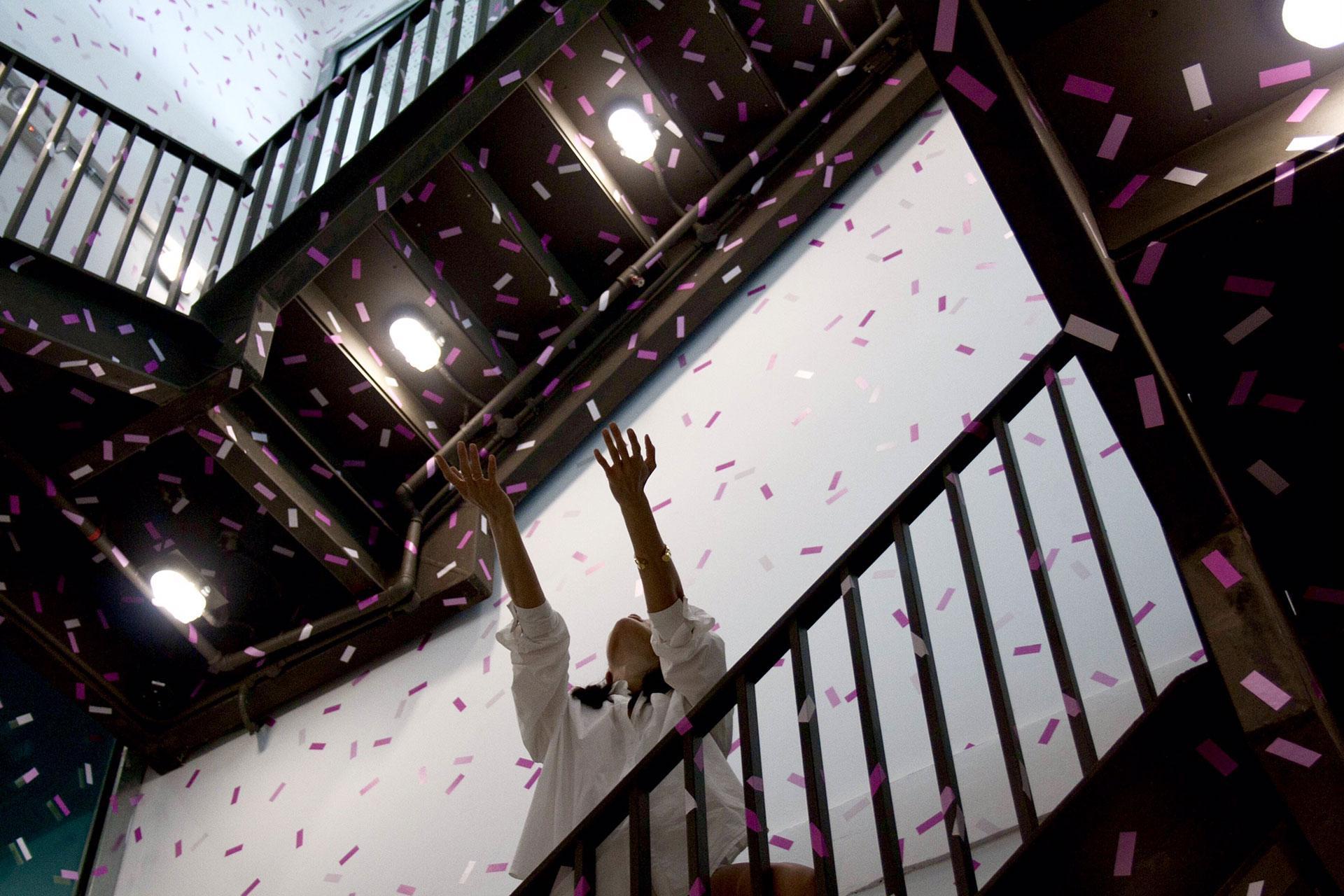
BANG, Custom Vinyl Confetti Stickers, 2016
Ng’s recent works have moved in the opposite direction to the lightness and levity of her earlier oeuvre. They have taken on more weight, and become more solid and monumental.
How To Disappear Into A Rainbow (2016), commissioned for Hermes Singapore’s art space, reprises the soft pastel palette of Ng’s earlier projects. This time however, the washes of colour are realized in solid, three dimensional form, taking the shape of plinths that act as walls within the space, creating a prismatic labyrinth for visitors to explore.
A similar approach to form can be observed in Merry Go Round (2020), the installation’s elliptical structure recalling the forms of classical architecture such as amphitheatres.
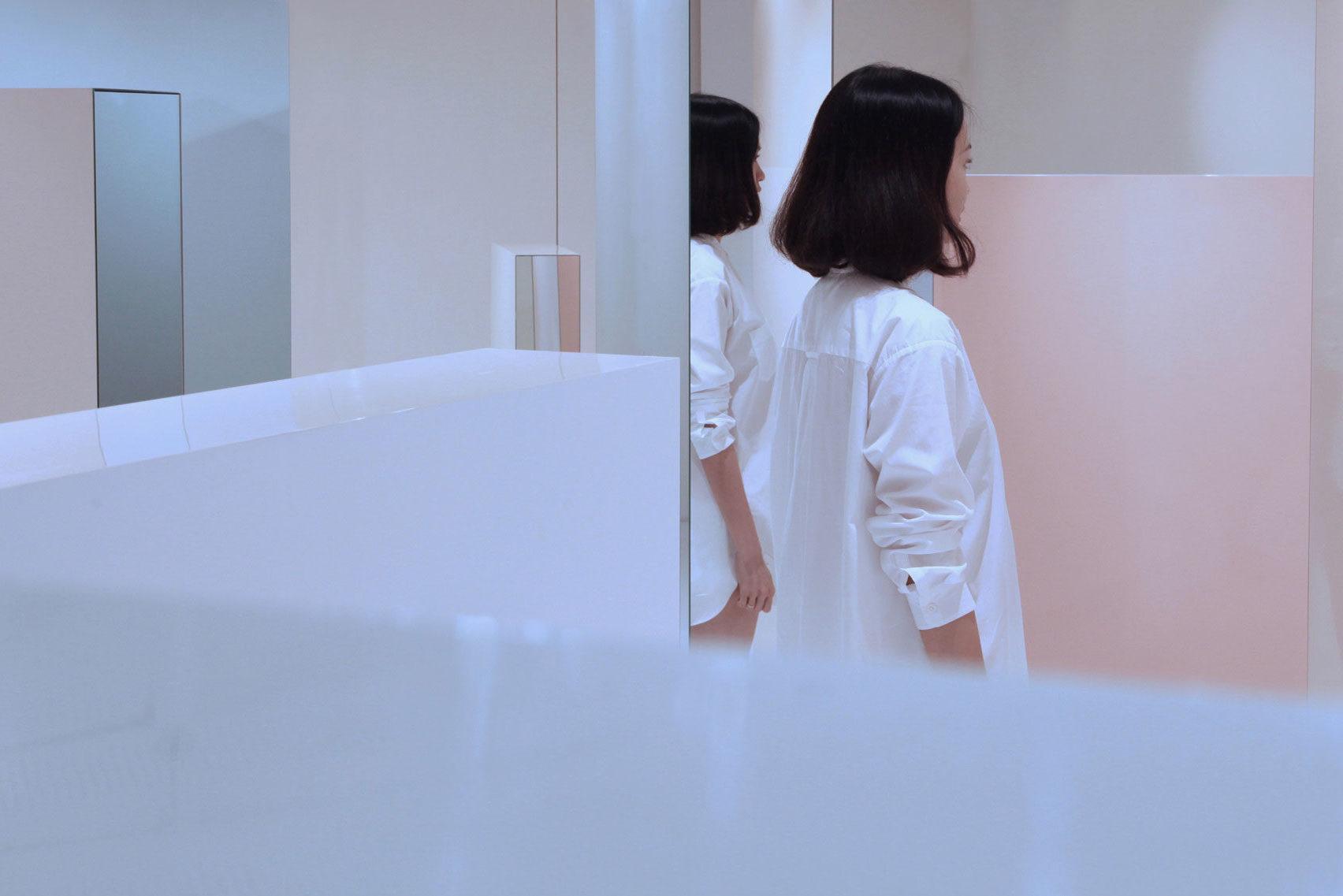
HOW TO DISAPPEAR INTO A RAINBOW, Hermes Foundation Commissioned Solo Installation, Wood, Glass, Polyurethane Paint, 2016
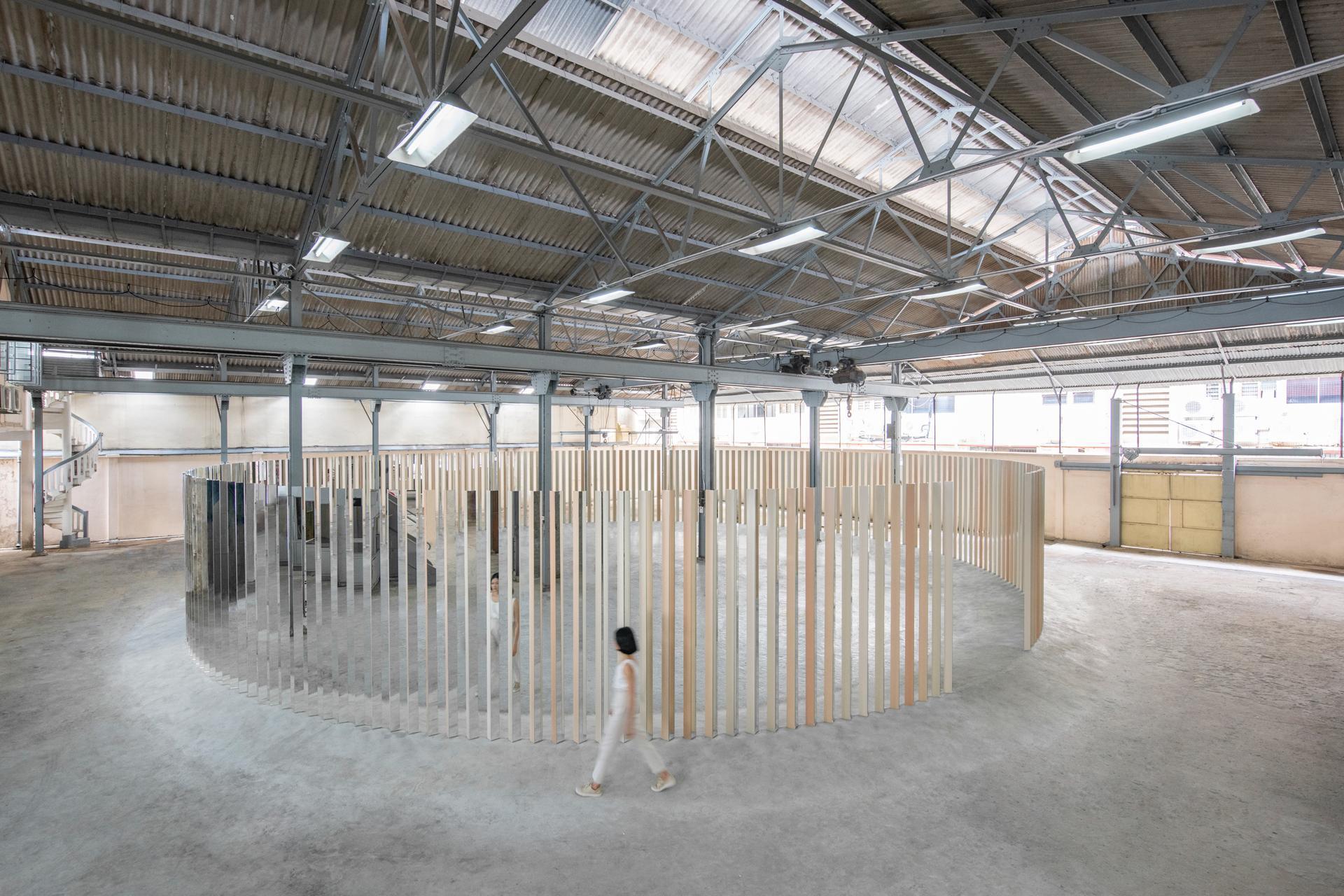
MERRY GO ROUND, Aluminium, Steel, Glass, Polyurethane Paint, 1850 x 1850 x 280 cm, 2020
A notable movement may be observed in the successive iterations of Perfect Stranger. Initially realized in 2018 as an installation of large paper sheets on a white floor, the work’s first form was a wash of gradient hues that again conveyed a sense of evanescence.
Its ‘sister series’ Monument Momento (2018), arguably a second iteration of Perfect Stranger, transposed the distilled conversations onto hefty blocks of coloured marble.
These records of the artist’s dialogue with a psychologist over the course of a year now took on a new permanence and monumentality, reflecting perhaps a desire to memorialise or to pin down memory into something solid and lasting, before it slips away.
In the third and most recent iteration of Perfect Stranger, the coloured sheets of text are displayed on uniform rows of plinths in the atrium of the Asian Civilisations Museum. An austere solemnity hangs over this installation, a graveyard of time and memory.
If lightness and levity are metaphors for the ephemeral – for people, things, and times that slip away all too easily, then perhaps weight is a metaphor for the memorial, the heaviness of loss.

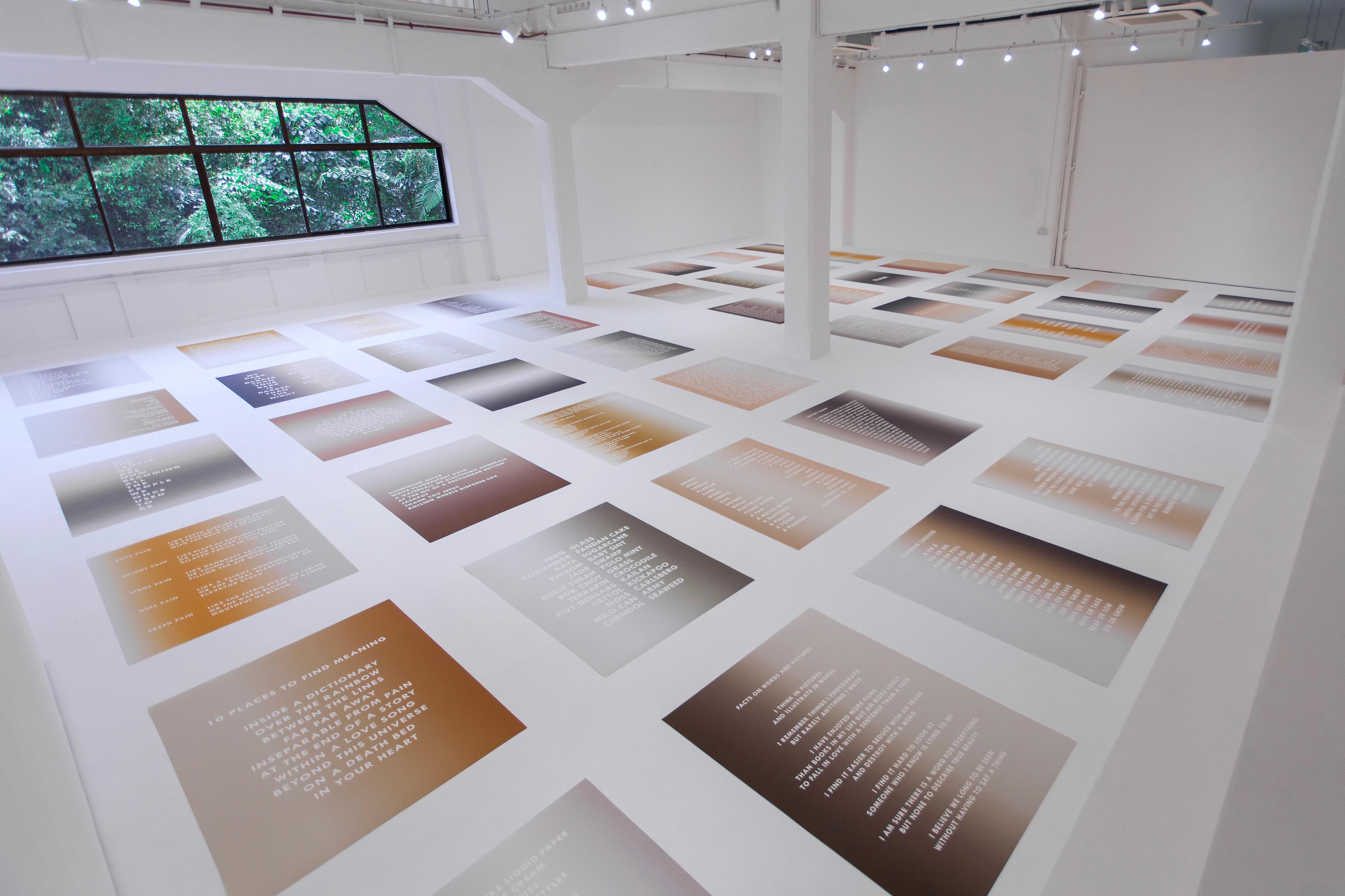
PERFECT STRANGER, Installation at Chan + Hori, 2018
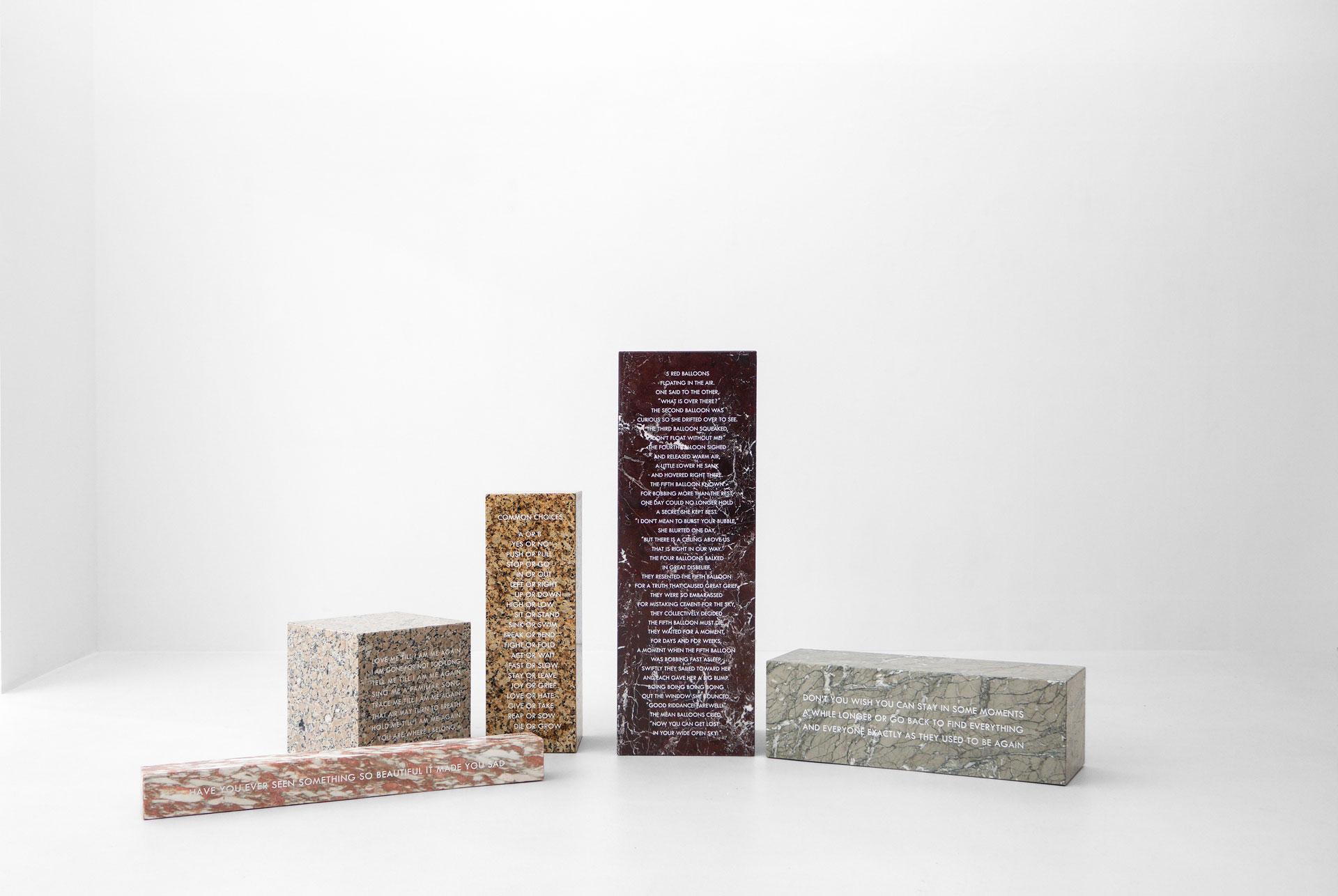
MONUMENT MOMENTO, Photographed Installation, Stone Engraved, Various sizes, Edition of 3, 2019
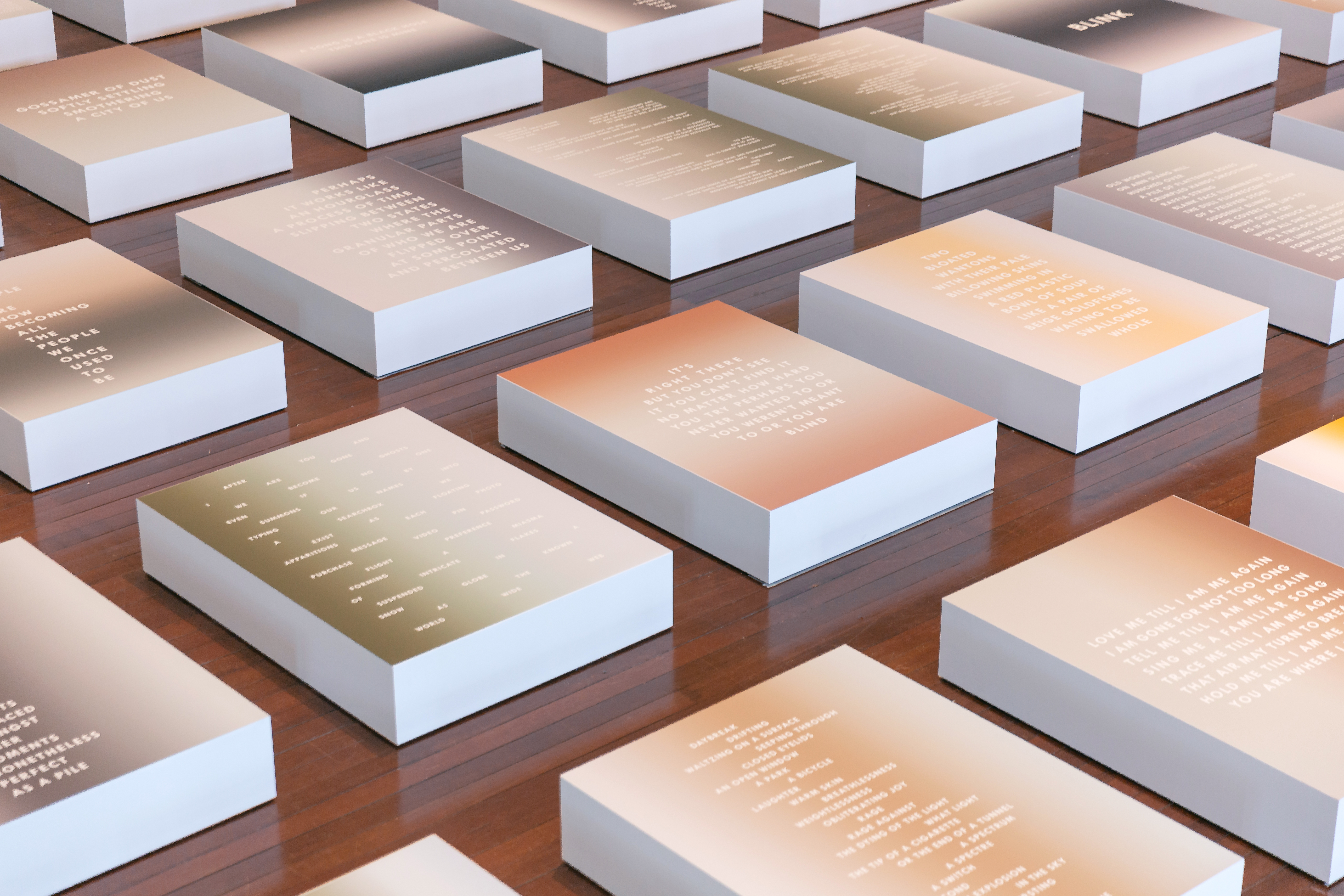
PERFECT STRANGER, Commissioned installation at Asian Civilisations Museum, 2020
INTO AIR
In Perfect Stranger, perhaps the seeds of Into Air were sown. Speaking about the former, Ng reflected: “This work is … a re-imagination of a self-portrait, and a narrative time capsule of oneself right here, right now. After all, what is each of us, but a vessel of vanishing selves? And the things we thought and felt in a passing moment, the only remnants of the day?” Into Air is precisely a record and remnant of vessels (of time and colour) as they vanish ‘into air’.
Created over a span of three years, the body of work in Into Air continues Ng’s preoccupation with time and her attempts to capture and convey its emotional tenor and elasticity, as opposed to the cold and factual progression of numerals commonly used to tell and record time. In three distinct bodies of work, Ng explores how time can be documented and manipulated.
Clocks is a series of photographs of giant blocks of frozen pigment, each image capturing the changing face of each ice block as it slowly melts. These lodestones of colour replace the sterile faces of conventional clocks, and seek to express a more poetic means of telling – and holding – time: what, for instance, does the ‘face’ of four o’clock look like?
Time Lost Falling In Love comprises time lapse videos that record the complete disintegration of each block of frozen pigment. The laborious capture of up to 20 hours for each ice block is condensed into a video of 20 minutes, effectively ‘bending time’, the strangely hypnotic and cathartic cascade of melting pigment serving as a visual metaphor for the flow of time.
Ash, the final body of work in Into Air, is a series of what the artist terms ‘residue paintings’, created by blanketing the liquid remains of each melted coloured block with large sheets of paper. Left to rest in a vat over weeks until all the liquid has evaporated, the sheets are slowly stained and marbled with tributaries and pools of pigment, a process that Ng has likened to ‘sieving time’.
IF I COULD FIND A SOUVENIR JUST TO PROVE THE WORLD WAS HERE, CLOCKS, Archival Pigment Print , 1150 x 1490 mm, 2021
FURTHER READING
